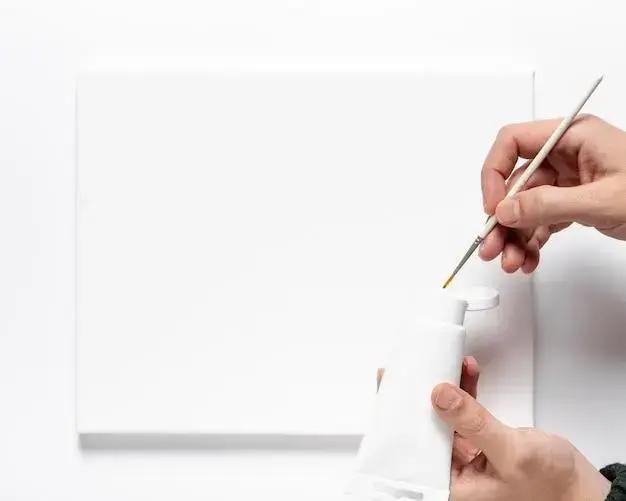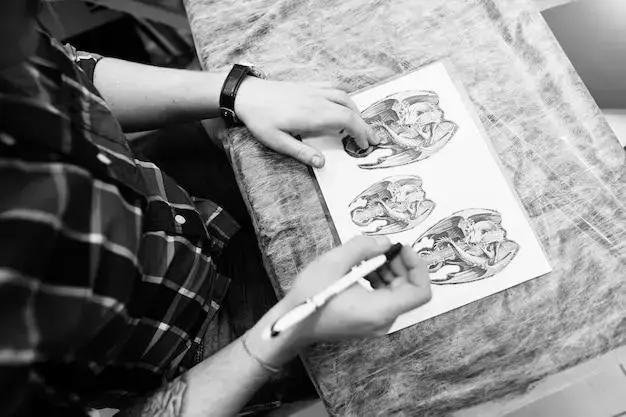Are you ready to dive into the world of music scores? Whether you’re a beginner or a seasoned musician, understanding how to read music scores is crucial for playing any piece of music effectively.
In this guide, we’ll explore essential tips that will help you decode those notes and symbols, making your musical journey smoother and more enjoyable.
So grab your instrument, and let’s get started!
Understanding the Basics of Music Notation
To get started with understanding the basics of music notation, it’s important to know that music is written on a staff, which consists of five lines and four spaces. Each line and space represents a different pitch. The higher the note is on the staff, the higher the pitch.
Notes can take various shapes and sizes, and each shape indicates a different duration. For example, a whole note is an open circle that lasts four beats, while a half note is an open circle with a stem that lasts two beats. Then we have quarter notes, which look like filled circles, lasting just one beat.
Another key element is the clef, which is placed at the beginning of the staff. The treble clef, for instance, indicates higher pitches, while the bass clef is used for lower pitches. Understanding what clef you’re reading is essential, as it changes the names of the notes on the lines and spaces.
In addition to notes, you’ll also encounter rests, which indicate silence in music. Just like notes, rests have different shapes that correspond to their duration. For example, a quarter rest signifies a one-beat pause.
Lastly, time signatures, found at the beginning of a piece, tell you how many beats are in each measure and what note value gets the beat. For example, a 4/4 time signature means there are four beats per measure, and the quarter note gets one beat.
By familiarizing yourself with these basic elements of music notation, you’ll be well on your way to reading and interpreting music scores with confidence!
How to Read Different Clefs
When it comes to reading different clefs, understanding their roles is essential for interpreting music accurately. The most common clefs you’ll encounter are the treble clef, bass clef, and alto clef, each serving a unique purpose.
The treble clef, also known as the G clef, is used for higher-pitched instruments like the flute, violin, and trumpet. It spirals around the second line of the staff, which represents the note G. Notes on the lines from bottom to top are E, G, B, D, and F, while the spaces represent F, A, C, and E. A handy mnemonic to remember the lines is “Every Good Boy Does Fine”!
Next up is the bass clef, or F clef, which is used for lower-pitched instruments such as the cello, bassoon, and tuba. The bass clef symbol starts on the fourth line of the staff, indicating that line represents F. The lines from bottom to top are G, B, D, F, and A, while the spaces represent A, C, E, and G. You can remember the lines with the phrase “Good Boys Do Fine Always”!
The alto clef is less common but crucial for instruments like the viola. It’s known as the C clef because it indicates where middle C is located, which is on the middle line of the staff. The lines from bottom to top represent E, G, B, D, and F, while the spaces represent F, A, C, and E. Knowing the alto clef is particularly beneficial if you play an instrument that uses it.
Lastly, there’s the tenor clef, which is similar to the alto clef but places middle C on the second line of the staff. It’s often used for higher ranges of instruments like the bassoon and trombone.
By mastering these clefs, you’ll enhance your ability to read music across various instruments and styles. So, keep practicing, and soon enough, you’ll be navigating through music scores like a pro!
Tips for Sight Reading Music Scores
Sight reading can be one of the most challenging yet rewarding skills for musicians. Here are some tips for sight reading music scores that can help you improve your ability to play music on the spot:
1. Scan the Piece First: Before diving in, take a moment to scan the music. Look for key signatures, time signatures, and any dynamic markings. This preparation helps you understand the overall structure of the piece.
2. Break It Down: If the piece is long or complex, break it down into smaller sections. Focus on a few measures at a time instead of trying to tackle the entire piece at once. This makes it less overwhelming and more manageable.
3. Keep Your Eyes on the Music: One common mistake is to look at your hands instead of the music. Try to keep your eyes on the score to maintain a steady flow. Your hands will naturally follow once you get used to it!
4. Use a Steady Tempo: When sight reading, it’s important to maintain a steady tempo. Don’t rush through difficult passages; instead, play at a speed that allows you to stay accurate. You can gradually increase the tempo as you become more comfortable.
5. Practice Regularly: Like any skill, sight reading improves with practice. Set aside time in your daily routine to sight read new pieces. Even just a few minutes a day can make a big difference over time.
6. Don’t Stop for Mistakes: It’s easy to get caught up in mistakes while sight reading. Instead of stopping, keep going. This helps you develop a sense of flow and keeps the music moving. You can always go back and work on tricky sections later.
By incorporating these tips into your practice routine, you’ll find that your sight reading skills will improve, allowing you to enjoy playing music with greater confidence and ease!
Common Symbols and Their Meanings
Understanding common symbols and their meanings in music notation is crucial for reading music scores effectively. Here’s a breakdown of some of the most frequently encountered symbols:
1. Note Heads: Notes are typically represented by round shapes known as note heads. An open note head (whole note) indicates a longer duration, while a filled note head (quarter note) represents a shorter duration.
2. Stems: The vertical line attached to a note head is called a stem. If the note is below the middle line of the staff, the stem usually extends upwards. Conversely, if it’s above the middle line, the stem extends downwards.
3. Rests: Just as notes indicate sound, rests signify silence. For example, a quarter rest looks like a squiggly line and indicates a one-beat pause, while a whole rest resembles an upside-down hat and signifies a four-beat silence.
4. Dynamics: Dynamics indicate the volume of the music. Common symbols include p for piano (soft), f for forte (loud), and mf for mezzo-forte (moderately loud). Additionally, symbols like crescendo (a hairpin opening to the right) indicate a gradual increase in volume.
5. Articulations: These symbols instruct how notes should be played. For instance, a staccato dot above or below a note means to play it short and detached, whereas a slur connecting two notes indicates they should be played smoothly.
6. Key Signature: Found at the beginning of the staff, the key signature tells you which notes are sharp or flat throughout the piece. It’s essential to pay attention to this as it affects the tonality of the music.
7. Time Signature: Located at the beginning of a piece, the time signature indicates how many beats are in each measure and what note value gets the beat. For example, a 4/4 time signature means there are four beats per measure, and a quarter note receives one beat.
By familiarizing yourself with these common symbols, you’ll be better equipped to interpret music scores and enhance your overall musical experience!
Practicing with Music Scores Effectively
Practicing with music scores effectively can significantly enhance your musical skills. Here are some strategies to make the most of your practice sessions:
1. Set Clear Goals: Before you start practicing, set specific goals for what you want to achieve. Whether it’s mastering a particular piece, improving your sight reading, or working on technique, having clear objectives helps you stay focused.
2. Use a Metronome: A metronome is an invaluable tool for developing your timing and rhythm. Start at a slow tempo to ensure accuracy, then gradually increase the speed as you become more comfortable with the piece. This helps you build confidence and precision.
3. Isolate Difficult Sections: If you encounter challenging passages, don’t hesitate to isolate them. Break them down into smaller chunks and practice each part slowly. Once you feel confident, gradually piece them back together.
4. Vary Your Practice Routine: To keep things interesting, mix up your practice routine. Alternate between different pieces, techniques, and styles. This not only prevents boredom but also helps you develop a well-rounded skill set.
5. Record Yourself: Listening to recordings of your practice sessions can provide valuable insights. It allows you to hear areas that need improvement and track your progress over time. Plus, it can be quite motivating to hear how far you’ve come!
6. Incorporate Sight Reading: Make sight reading a regular part of your practice. Set aside a few minutes each day to read through new pieces. This will help you become more comfortable with reading music and improve your overall musicianship.
7. Stay Patient and Consistent: Progress takes time, so be patient with yourself. Consistency is key! Try to practice regularly, even if it’s just for a short period each day. Over time, you’ll notice significant improvements.
By implementing these strategies, you’ll find that your practice sessions become more productive and enjoyable. Remember, the journey of learning music is just as important as the destination!
Conclusion
In conclusion, mastering the art of reading music scores is a rewarding journey that opens up a world of musical possibilities.
By understanding the basics of music notation, familiarizing yourself with different clefs, and practicing effective sight reading techniques, you’ll enhance your ability to interpret and perform music with confidence.
Remember to pay attention to common symbols and their meanings, as they are essential for accurate performance.
Moreover, practicing with music scores effectively can significantly improve your skills.
Set clear goals, use a metronome, and don’t shy away from isolating difficult sections.
By incorporating these methods into your routine, you’ll not only become a better musician but also enjoy the process of learning and playing music.
So grab your instrument, dive into those scores, and let the music flow!
FAQ – Frequently Asked Questions about Music Scores
What is a music score?
A music score is a written representation of music that shows the notes, rhythms, and other musical instructions for performers.
What are the different types of clefs?
The most common clefs are the treble clef, bass clef, alto clef, and tenor clef, each indicating different pitch ranges.
How can I improve my sight reading skills?
To improve sight reading, practice regularly, scan the music before playing, and keep your eyes on the score instead of your hands.
What do common symbols in music notation mean?
Common symbols include note heads (indicating duration), rests (indicating silence), dynamics (volume levels), and articulations (how notes should be played).
How should I practice music scores effectively?
Set clear goals, use a metronome, isolate difficult sections, and vary your practice routine to stay engaged and improve your skills.
Why is it important to understand music notation?
Understanding music notation allows you to read and interpret music accurately, which is essential for performing pieces correctly and expressing musical ideas.





